What do I need to build the foam-fault model?
Dr. Robert Butler shows the parts needed to create the effective foam-fault model.
Part 2 shows to assemble it.
Parts needed for construction:
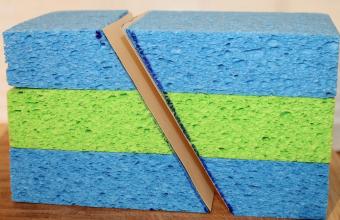
Fault types and rock deformation. The faults and folds in rocks provide evidence that the rocks are subjected to compressional, tensional, and/or shear stress. Silly Putty™ allows students to discover that the structure we see in rocks provides evidence for they type of stress that formed. Students apply this idea by examining images of faults and folds experimentation with sponge models.
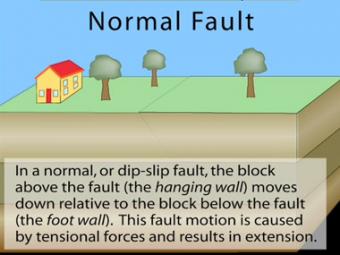
In a normal fault, the block above the fault moves down relative to the block below the fault. This fault motion is caused by extensional forces and results in extension. Other names: normal-slip fault, tensional fault or gravity fault. Examples: Sierra Nevada/Owens Valley; Basin & Range faults.
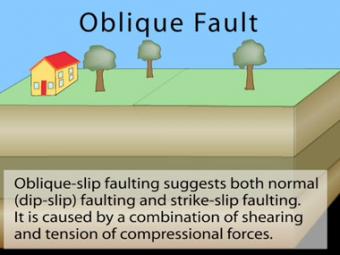
This left-lateral oblique-slip fault suggests both normal faulting and strike-slip faulting. It is caused by a combination of shearing and tensional forces. Nearly all faults will have some component of both dip-slip (normal or reverse) and strike-slip, so defining a fault as oblique requires both dip and strike components to be measurable and significant.
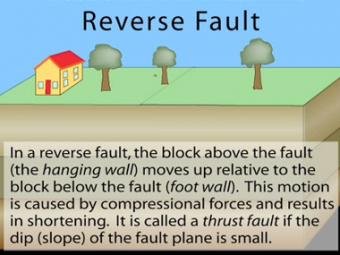
In a reverse fault, the block above the fault moves up relative to the block below the fault. This fault motion is caused by compressional forces and results in shortening. A reverse fault is called a thrust fault if the dip of the fault plane is small. Other names: thrust fault, reverse-slip fault or compressional fault]. Examples: Rocky Mountains, Himalayas.
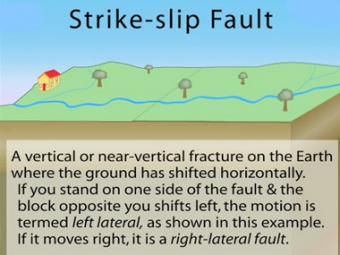
In a strike-slip fault, the movement of blocks along a fault is horizontal. The fault motion of a strike-slip fault is caused by shearing forces. Other names: transcurrent fault, lateral fault, tear fault or wrench fault. Examples: San Andreas Fault, California; Anatolian Fault, Turkey.

How can I demonstrate plate tectonic principles in the classroom?
Video lecture demonstrates the use of foam faults to demonstrate faults, and a deck of cards to demonstrate folds and fabrics in rock layers. Different types of faults include: normal (extensional) faults; reverse or thrust (compressional) faults; and strike-slip (shearing) faults.
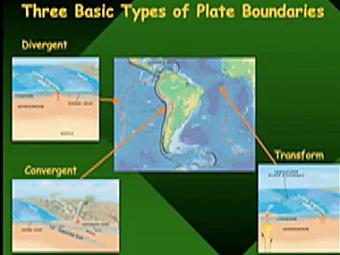
Video lecture covers three basic types of tectonic plate boundaries.